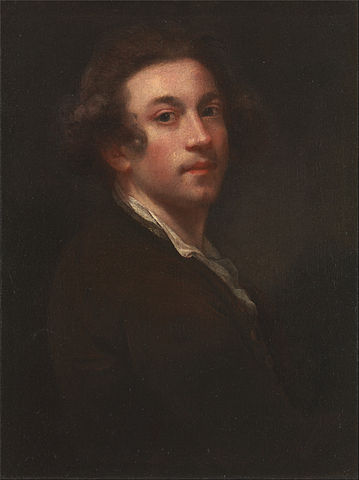
Born: 16 July 1723, London
Died: 23 February 1792 (aged 68)
Known For: Portraiture Painter
The Life of Joshua Reynolds
Sir Joshua Reynolds was a prominent 18th-century English painter, specializing in portraits. Born on July 16, 1723, in Plympton, Devon, England, he was one of the major European painters of his era. Reynolds is best known for his influence on British art, particularly through his role in founding and serving as the first President of the Royal Academy of Arts, and for his innovative painting techniques.
Reynolds showed an early interest in art, and after apprenticing with the artist Thomas Hudson in London, he quickly established himself as a portrait painter. His works are notable for their development of the Grand Style, emphasizing idealization of the imperfect. He was adept at capturing the character and grandeur of his subjects, making him a favorite among the nobility and the intellectual elite of his time.
In 1768, Reynolds became the first President of the Royal Academy of Arts, a position he used to elevate the status of art and artists in Britain. Through his Discourses on Art, delivered at the Academy, he advocated for the study of classical art and the importance of historical subjects, which had a lasting impact on British art education and practices.
Reynolds was known for experimenting with pigments and techniques, which, while contributing to the vibrancy and depth of his paintings, sometimes affected their longevity. Despite this, his legacy as a portrait artist and an educator is significant. Many of his works are displayed in leading art galleries and museums around the world.
He was knighted by King George III in 1769, becoming Sir Joshua Reynolds. Despite never marrying, Reynolds was a central figure in London’s social and intellectual circles, counting among his friends notable figures such as writer Samuel Johnson and actor David Garrick.
Sir Joshua Reynolds died on February 23, 1792, in London. His contributions to British art and the Royal Academy have made him an enduring figure in the history of Western art, celebrated for his portraits that captured the essence of British societal and cultural life during the 18th century.
Joshua Reynolds’ Notable Works
Sir Joshua Reynolds, a foundational figure in 18th-century British art, is renowned for his portraits that blend grandeur with psychological depth. While a comprehensive list of his “most famous” works might vary depending on criteria such as historical importance, artistic innovation, or popularity, here are ten of his works that are frequently highlighted for their significance and impact:
- “Self-Portrait” (1776) – This introspective self-portrait showcases Reynolds’s skill and his contribution to the art of portraiture.
- “Lady Cockburn and Her Three Eldest Sons” (1773) – This painting is admired for its maternal affection and sophisticated composition, blending grand style with intimate familial love.
- “The Age of Innocence” (1788) – Often celebrated for its depiction of childlike purity, this work has become one of Reynolds’s most beloved portraits.
- “Colonel Tarleton” (1782) – A dynamic portrait of the British cavalry officer Banastre Tarleton, noted for its vitality and the detailed rendering of military attire.
- “Sarah Siddons as the Tragic Muse” (1784) – This portrait of the actress Sarah Siddons is one of Reynolds’s most famous works, embodying the grandeur and emotional depth of tragic performance.
- “Captain Robert Orme” (1756) – One of his earlier works, this portrait is significant for its demonstration of Reynolds’s mastery of form and composition early in his career.
- “Lord Heathfield of Gibraltar” (1787) – This portrait of General George Augustus Eliott, Lord Heathfield, commemorates the defense of Gibraltar against the Spanish during the Great Siege, showcasing Reynolds’s ability to capture the essence of British heroism.
- “The Marlborough Family” (1777) – A grand, complex portrait of the Duke of Marlborough and his family, highlighting Reynolds’s skill in depicting group dynamics and aristocratic grace.
- “Commodore Keppel” (1752-1753) – One of Reynolds’s early works, this portrait established his reputation, showcasing his talent for capturing the character and dignity of his subjects.
- “Mrs. Abington as Miss Prue in ‘Love for Love'” (1771) – A portrait of the actress Frances Abington in character, demonstrating Reynolds’s ability to convey theatricality and personality.
Reynolds’s body of work is vast, and these pieces represent only a fraction of his contributions to portrait art. His portraits are celebrated for their elegance, innovation, and the way they capture the social and cultural zeitgeist of his time. His influence extended beyond his paintings, through his role in the Royal Academy and his writings, shaping the direction of British art long after his death.